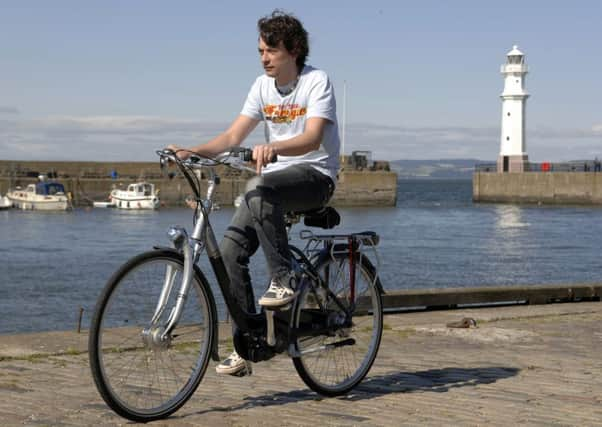Graeme Hart: Kick cars out to make medieval city fit for 21st century


Nowhere in the world is famous, in a good way, for being dominated by motor vehicles – ask Los Angeles. How, then, have we come to a situation where Edinburgh’s ancient and Georgian Unesco World Heritage Site has become utterly asphyxiated by unchecked motor traffic? Is that appropriate for our narrow, cobbled streets? Are the levels of particulate pollutants and nitrogen oxides tolerable?
Do we want a city centre where the majority of public space is unsafe for pedestrians to venture into? Indeed, as wonderful as our buses are, is it acceptable that there is a solid queue of them from one end of Princes Street to the other? The answers, surely, are no.
Advertisement
Hide AdThe dangers of air pollution are becoming increasingly apparent, and the evidence is clear that these problems only go away in small part with electric vehicles, so it is time to be radical. As our population grows, driving cars on increasingly congested streets is totally unsustainable. We must provide transport solutions that serve everyone, from those on the poorest incomes to those well-off.
If alternatives to driving are high-quality and convenient, be they transit systems or bike share and cycle lanes, then people will use them, regardless of status. And we must come up with delivery solutions that allows the economy to flourish, but maintains the heart of the city as a place for people, not cars and vans. Mobility solutions for disabled, too, must be front and centre of any vision. This new city should be accessible to all.
Crucially, we need not reinvent the wheel. Cities across Europe are pioneering last-mile deliveries by cargo bike and small electric vehicles and filtering private motor vehicles out of their city centres. There are too many cities to name, but it’s a list that would surprise you.
Do we, as a city, and do our city leaders, aspire to a better future, one where people linger, spend time, spend money, somewhere that is famous as one of the finest city-scapes in the world? Somewhere with a vibrant, diverse economy based around people, not car-strewn medieval streets? I really hope so. The evidence that this is good for cities is overwhelming. Edinburgh must move fast, or be left-behind in this global race of sustainable urbanism.
In this regard, Lesley Macinnes, Edinburgh council’s transport committee convener, has made one of the boldest appointments in recent council history. By appointing the highly respected Daisy Narayanan, on secondment from Sustrans Scotland, to head up the Central Edinburgh Transformation, she has made a clear statement of intent.
Ms Narayanan has one year at the council to draw up a deliverable future for Edinburgh, fit for a sustainable, 21st century city. The test now is whether the council and its officers will be the force for change that is needed. The Clean Air Day event and the announcement of car-free Sundays are extremely encouraging pointers. The tram (with its subsequent completion/extension) and the new bike-share scheme, combined with the forthcoming Low Emmission Zone, show the direction the future of our city must take. A place where people come first.
Graeme Hart is the owner of Hart’s Cyclery in Corstorphine.
